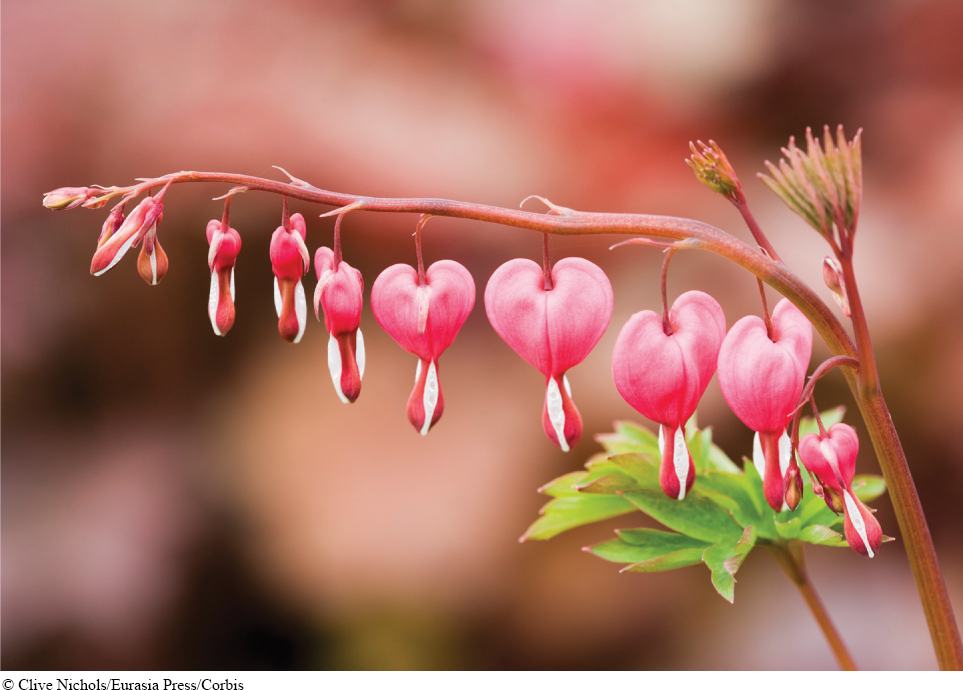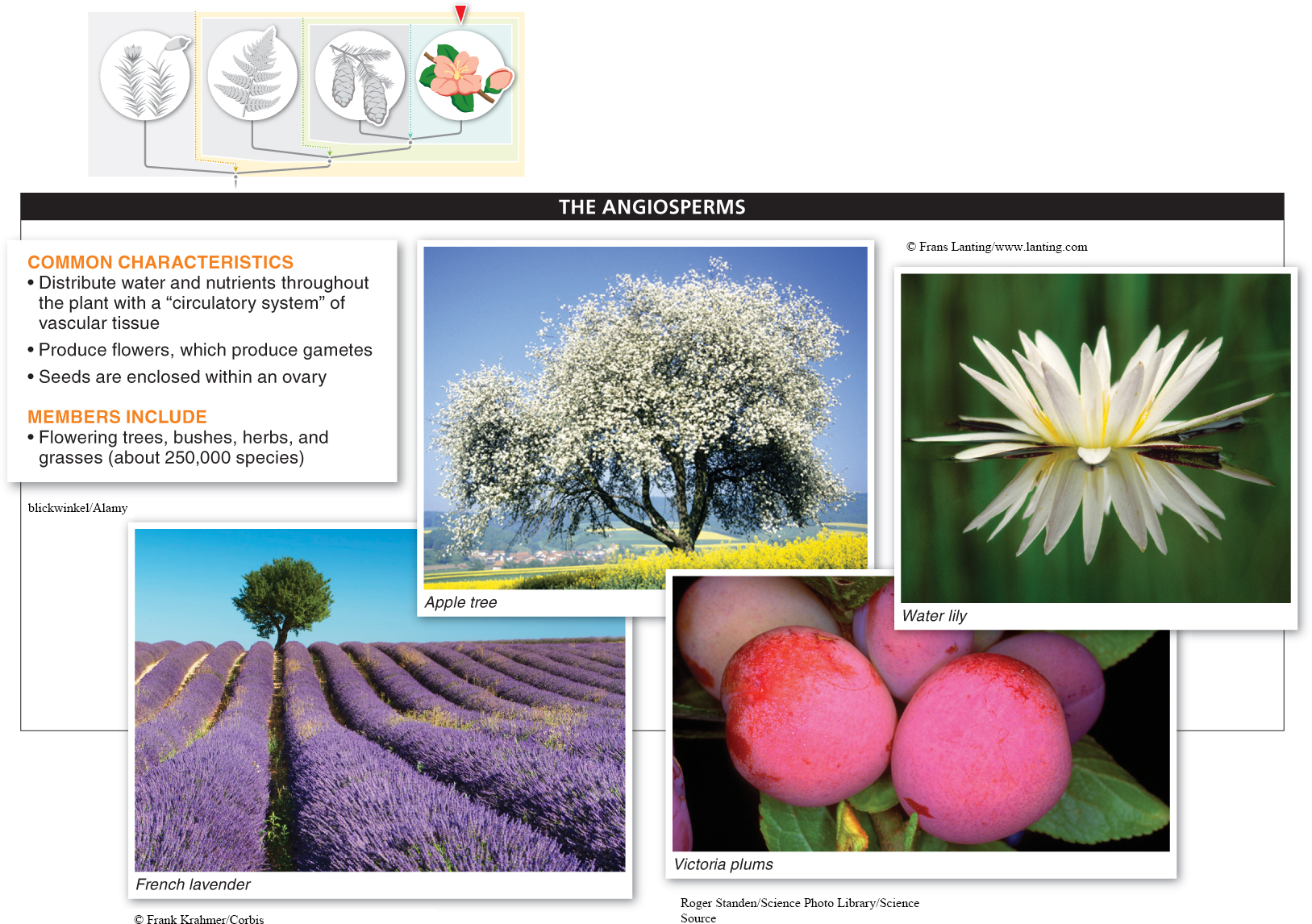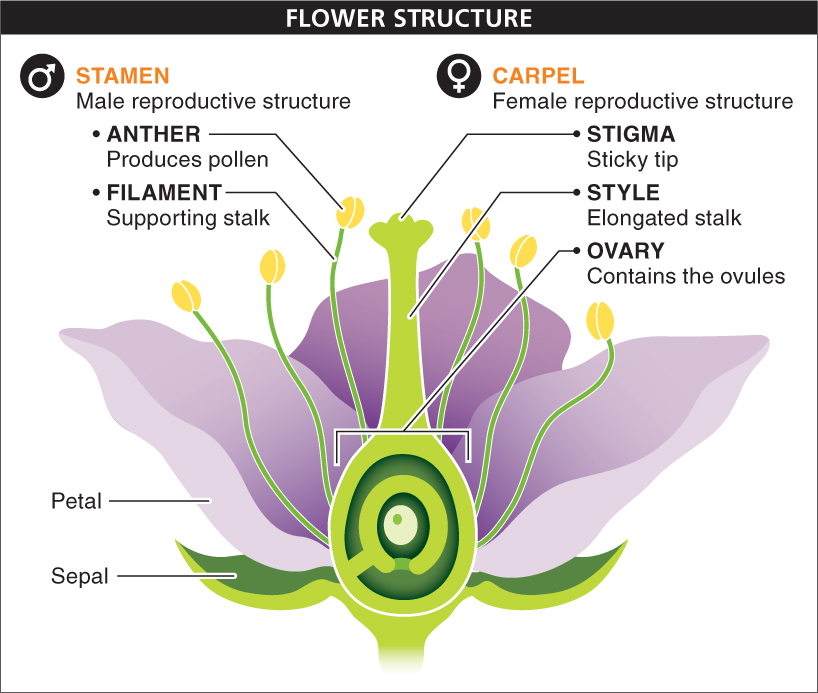12.8–12.10: Flowering plants are the most diverse and successful plants.

The appearance of flowering plants (angiosperms) about 135 million years ago in the Cretaceous period set the stage for the botanical world we know today, with flowering trees, flowering bushes, and all the grasses and herbaceous (non-

Flowers come in a bewildering variety of sizes, shapes, and colors, but they all have similar structures: a supporting stem with modified leaves—

Pollination, in angiosperms, is the transfer of pollen from the male reproductive structures to the female reproductive structures of a flower—
Although most flowers contain both male and female structures, several thousand species of plants produce flowers that are only male or only female. Sometimes, male and female flowers are borne on different individual plants, but in quite a few angiosperm species, the same plant has some male flowers and some female flowers, often side by side. Maize (corn) is a familiar plant with male and female flowers in different places on the same plant, although you might not recognize the reproductive structures as flowers. The tassel at the top of the plant is the male flower, and the ear is formed by female flowers.
TAKE-HOME MESSAGE MESSAGE 12.8
Flowering plants appeared more than 100 million years ago and diversified rapidly to become the dominant plants in the modern world. A flower houses a plant’s reproductive structures. Most flowers have both male and female reproductive structures, but some species have flowers with only male or only female structures.
Briefly describe the male and female parts of a flower.
509
510